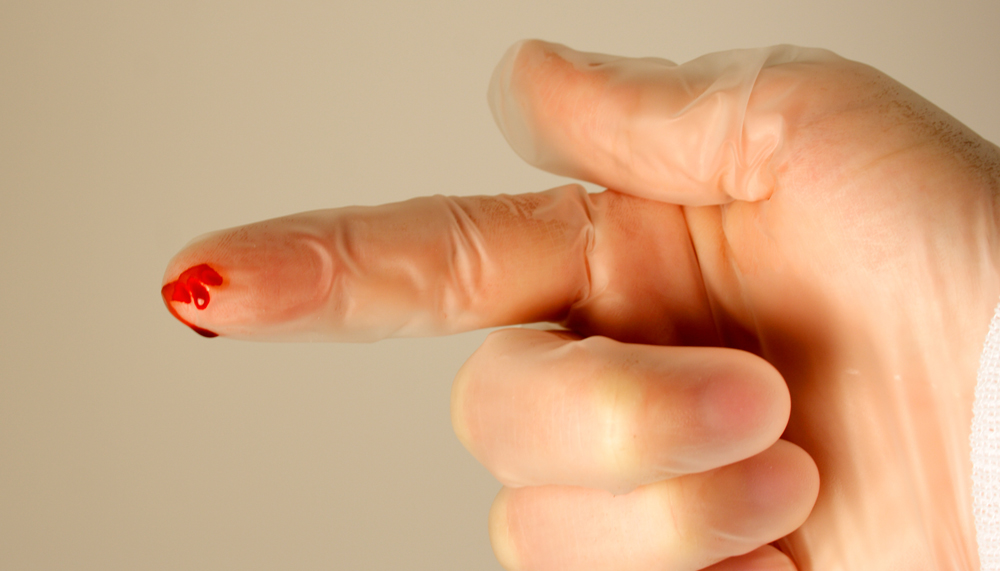Needlestick injuries affect about 18,000 healthcare professionals every year, but with unreported cases, the figure may be more than 30,000.
It’s the kind of workplace injury that health professionals fear the most. If it wasn’t already a job where practitioners must face numerous risks every day, the accidental jab of a used needle can strike dread into the heart of every nurse who works directly with patients, taking blood or administering medication.
Anne Trimmer, CEO of the Medical Technology Association of Australia (MTAA), said the worst needlestick injury hazard is the transmission of bloodborne pathogens such as hepatitis B, hepatitis C and HIV AIDS.
“A further 20 pathogens transmitted may include malaria, infectious mononucleosis, diphtheria, herpes, tuberculosis and syphilis,” said Trimmer, who is also the chair of the Alliance for Sharps Safety and Needlestick Prevention in Healthcare, formed in 2009.
The most challenging obstacle in their campaign for sharps safety, she said, is the “lack of policy leadership and unclear portfolio responsibilities between state and federal departments”.
She added that healthcare workers don’t disclose, due to the stigma attached to owning up to a perceived “mistake” in handling of needles or sharps.
“The decision on a local hospital level to use safety engineered medical devices (SEMDs) to prevent injuries is often made in the context of procurement budgets and not seen as an opportunity to ensure staff safety.”
Citing a report on SEMDs, Trimmer said Australia may save up to $18.6 million per year, with the use of SEMDs. If the cost of some treatments were included, annual savings would increase to at least $36.8 million.
This conclusion refutes the assumption that SEMDs will raise the cost. “In fact, the use of the technology will save money for health budgets in the long run,” said Trimmer.
The Alliance has joined with Dr Karen Daley, president of the American Nurses Association and international campaigner on the use of devices that can minimise needlestick injuries.
Daley began campaigning when she contracted HIV and hepatitis C in 1998, through a needlestick injury while she was a practising nurse. She told Nursing Review how proper healthcare facilities and practice could have prevented this.
“My injury occurred as I was disposing of a needle I had just used to draw blood. Reaching behind me and unable to see the opening of the sharps disposal box on the wall that was overfilled, I sustained a deep finger puncture from a contaminated needle that was protruding from the box,” she said.
“If the box had been properly emptied and positioned at eye level so I could see the protruding needle, my injury would not have occurred.
“Also, if the contaminated needle I was stuck with had been a safety-engineered device, it also would likely not have injured me.”
Daley, who was in Melbourne for a nursing conference, was surprised and disturbed to learn that not all hospitals in Australia have implemented needlestick prevention programs, despite Australia’s leading health care.
“That means a large number of at-risk workers have no access to safety devices that we know can protect workers from these potentially life-threatening injuries,” she said.
According to her, these injuries present a real threat to health workers in Australia because they are exposed to bloodborne pathogens. Thus, they should receive the vaccine for hepatitis B.
However, HIV or hepatitis C has no protective vaccines.
Needlestick injuries not only affect workers but the patients and the whole health system as well.
“What we have also learned in the US in recent years, however, is that worker safety is directly tied to patient safety. In other words, when the worker isn’t safe, the patient’s safety is also placed at risk,” said Daley.
She added, if available safety technologies are not used, workers’ morale suffers and workplace stress heightens as more injuries and illness occur. This can be costly.
“In the US, the average cost to replace one RN can be over $60,000. And when employers choose to treat rather than protect their workers, the indirect and direct costs associated are also significant.
“Exposures can cost from $300–$3000 per worker, depending on level of risk associated with the injury and whether post-exposure medications are indicated,” she said.
Elizabeth Gillespie, co-director of sterilisation and infection control at Monash Medical Centre, worked closely with the Centre’s procurement department, which removed all non-safety devices from the ordering system when there was a safety device alternative.
Upon order placement, safety devices automatically replace the non-safety items that had previously been ordered.
“Our procurement department also sent out an extensive list of the new order numbers that would replace the previous non-safety devices,” she said. It has also developed in-service education sessions and promoted safety devices during staff orientation.
In 2009, a safety insulin pen needle became available for purchase in Australia, and a review of the pen needle injuries suggested that these could prevent injuries.
“We undertook a small trial in one ward where there had been three recent needle stick injuries associated with non-safety insulin pen needles,” said Gillespie.
“Our trial was very successful and we introduced the safety device across the entire health service in 2011.”
With attention to ordering such as that of Monash Medical Centre in Melbourne, injuries from non-safety devices have been placed under control, and with more dedication of health professionals and alliances, it is hoped that needlestick injuries may be finally eliminated.
Do you have an idea for a story?Email [email protected]
 Aged Care Insite Australia's number one aged care news source
Aged Care Insite Australia's number one aged care news source

